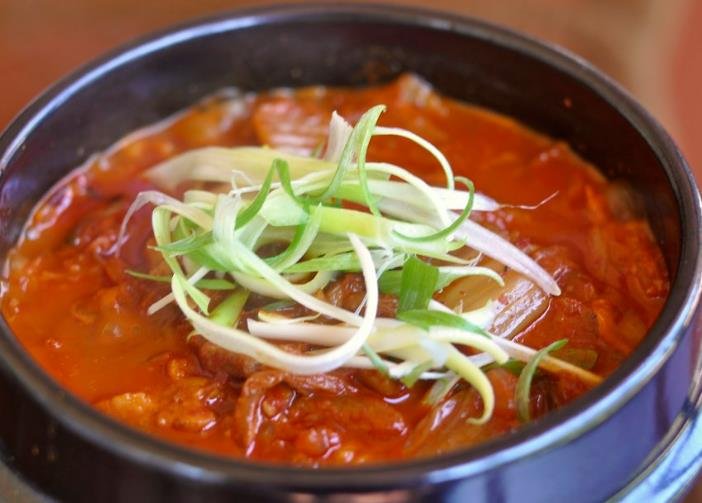Jjigae, a beloved Korean stew, has captured the hearts and taste buds of many around the world. Known for its rich flavors and comforting warmth, jjigae is more than just a meal; it’s a cultural experience. This article delves into the obsession with cooking Korea’s best-loved soups, exploring the history, variations, and the deep connection people have with this iconic dish.
Jjigae has been a staple in Korean households for centuries. Traditionally, it was made with whatever ingredients were available, making it a versatile and practical dish. The most popular version, kimchi jjigae, utilizes aged kimchi, which adds a depth of flavor that is both tangy and spicy. This stew is often made with pork, tofu, and vegetables, creating a hearty and satisfying meal.

The tradition of making kimchi, known as kimjang, is a communal activity in Korea. Families and neighbors come together to prepare large batches of kimchi, which are then used throughout the year. This practice not only ensures a steady supply of kimchi but also strengthens community bonds. The resulting kimchi jjigae is a testament to this collective effort, embodying the spirit of togetherness and resilience.
In modern times, jjigae has evolved to include a variety of ingredients and flavors. From seafood to beef, each version offers a unique taste experience. Despite these variations, the essence of jjigae remains the same: a comforting, nourishing dish that brings people together.
The Art of Making Jjigae
Cooking jjigae is both an art and a science. The key to a perfect jjigae lies in the balance of flavors and the quality of ingredients. Aged kimchi is essential, as it provides the distinctive sourness and depth that fresh kimchi lacks. The addition of pork or other meats adds richness to the broth, while tofu and vegetables contribute texture and nutrition.
To make kimchi jjigae, start by sautéing the kimchi in a pot until it softens and releases its juices. This step enhances the flavor of the kimchi and forms the base of the stew. Next, add the meat and continue to cook until it is browned. Pour in water or broth, and bring the mixture to a boil. Reduce the heat and let it simmer, allowing the flavors to meld together. Finally, add tofu and vegetables, and cook until they are tender.
The beauty of jjigae lies in its adaptability. You can adjust the ingredients and seasoning to suit your taste, making it a personalized dish. Whether you prefer a spicier stew or a milder version, jjigae can be tailored to your preferences.
Jjigae: A Culinary Connection
For many Koreans, jjigae is more than just food; it is a connection to their heritage and family. The act of cooking and sharing jjigae is a way to preserve traditions and pass them down to future generations. It is a dish that evokes memories of home and family gatherings, providing comfort and solace.
In Korean culture, meals are often shared, and jjigae is typically served in a communal pot. This practice fosters a sense of unity and togetherness, as everyone gathers around the table to enjoy the meal. The communal aspect of jjigae reflects the importance of relationships and community in Korean society.
Jjigae has also gained popularity outside of Korea, with many people around the world discovering its delicious flavors and comforting qualities. It has become a symbol of Korean cuisine, representing the rich culinary heritage of the country. Whether enjoyed in a traditional Korean home or a modern restaurant, jjigae continues to bring joy and comfort to those who savor it.
















